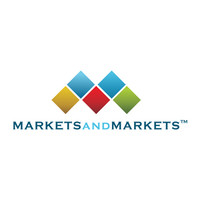The report “Green Methanol Ships Market by Ship Type (Cruise Ships, Container Vessels, Bulk Carriers, Tankers, Dry Cargo Ships, Tugs & Workboats), Type (Single Fuel, Dual Fuel), Sales Channel (Newly Built & Linefit, Retrofit) and Region – Global Forecast to 2035” The green methanol newly built vessels delivery is expected to be 30 units in 2025 to 274 units in 2035, while the green methanol vessels that are retrofitted are expected to be 4 units in 2025 to 213 in 2035. The green methanol ships market is estimated to be USD 4.29 billion in 2025 and is projected to reach USD 15.25 billion by 2030 at a CAGR of 28.9% from 2025 to 2030 and USD 30.98 billion in 2035 with a CAGR of 12.2% during 2031 to 2035 , with a CAGR of 21.9% from 2025-2035.
Download PDF Brochure @ https://www.marketsandmarkets.com/pdfdownloadNew.asp?id=205585780
Browse 447 market data Tables and 69 Figures spread throug 348 Pages and in-depth TOC on “Green Methanol Ships Market”
View detailed Table of Content here – https://www.marketsandmarkets.com/Market-Reports/green-methanol-ships-market-205585780.html
A strong driver in green methanol ships market is derived from global sustainability and decarbonization drives, by way of the emission targets set up by regulatory bodies like the IMO. The shipping companies are increasingly opting for green methanol due to its low-carbon profile for clean combustion and the corporate ESG goals aligned with the same. Major dual-fuel technologies and the growth of new infrastructure for methanol bunkering have helped to promote this sustainable fuel. In addition, fuel availability is also being improved through rising investments in renewable methanol production from sources such as biomass and green hydrogen, making methanol a practical solution for future shipping needs.
By ship type, the cargo vessels segment is projected to hold a larger market share during the forecast period.
The cargo vessels segment is likely to take a larger share of the green methanol ships market by the end of the forecast period across all segments. The cargo vessels segment will do so due to its critical role in global trade and the need for sustainable long-haul transport solutions. As such, cargo vessels are significant consumers of fuel and, therefore, reducing emissions stands at the top of their agenda. The regulatory pressures and corporate sustainability goals of adopting green methanol drive investments in dual-fuel engine technology for such vessels. Methanol bunkering infrastructure is getting expanded at key ports, and retrofitting solutions are gaining popularity, making methanol-powered cargo ships the fastest-growing segment.
By type, the dual fuel segment is expected to grow the most during the forecast period.
In the forecast period, it is estimated that the share of the dual fuel segment will rise because it enables vessels to run both on methanol and conventional fuels, thus permitting potential operational flexibility. The increased sensitivity on the part of the operators to navigate the transition to low-carbon solutions while keeping up in respect of efficiency in operations is very important. The immediate route to compliance with environmental regulations such as those set by the IMO regarding emission targets without losing reliability is through the dual-fuel engines. In the last couple of years, retrofit solutions and methanol bunkering infrastructure have grown, encouraging the uptake of dual-fuel systems to become the option of choice for shipping operators around the world.
By sales channel, Newly Built and Linefit are projected to lead during the forecast period.
Newly Built and Linefit, because of very increased demands from ship owners toward new energy-efficient vessels for stringent emission control, are expected to be the leaders in the demand pattern in green methanol ships. Shipping operators are pressing for new vessel construction with methanol compatible engines for long-term sustainability and switching fuel flexibility. These ships have been optimized to provide maximum designs for improving fuel efficiency and reducing operating costs. In addition, because of the rapidly increasing global trade, newbuild vessels capable of hosting leading-edge dual-fuel technologies are further added to the fleet. Investments into next-generation ship designs as well as expansion in the supply of green methanol infrastructure power this growth segment.
Rest of the World holds the highest growth rate in the region for the Green Methanol Ships market.
Other important green methanol ships markets include Rest of the World markets motivated by increasing maritime trade, as well as an awareness of sustainable fuel solutions that are being developed in emerging economies across Latin America, Africa. Governments across these regions are committed to taking measures to reduce carbon emissions and build demand for clean fuel solutions for methanol-powered ships. More facilities for producing methanol and bunkering infrastructure will promote regional transitions toward clean fuels. Besides the above, global shipping lines are creating opportunities to be able to enlarge their fleets in these developing markets, and the Rest of the World region is hence the main growth route for sustainable maritime solutions.
The report profiles key players such as HD Hyundai Heavy Industries (South Korea), Samsung Heavy Industries (South Korea), COSCO Shipping Industries Co., Ltd. (China), Huangpu Wenchong Shipbuilding Company Limited (China), and Shanghai Waigaoqiao Shipbuilding Co., Ltd. (China), Damen Shipyards Group (Netherlands), VARD AS (Norway), Sanlorenzo Yachts Limited (England) and Archipelago Expedition Yachts (England) among others.
Media Contact
Company Name: MarketsandMarkets™ Research Private Ltd.
Contact Person: Mr. Rohan Salgarkar
Email: Send Email
Phone: 18886006441
Address:1615 South Congress Ave. Suite 103, Delray Beach, FL 33445
City: Florida
State: Florida
Country: United States
Website: https://www.marketsandmarkets.com/Market-Reports/green-methanol-ships-market-205585780.html


